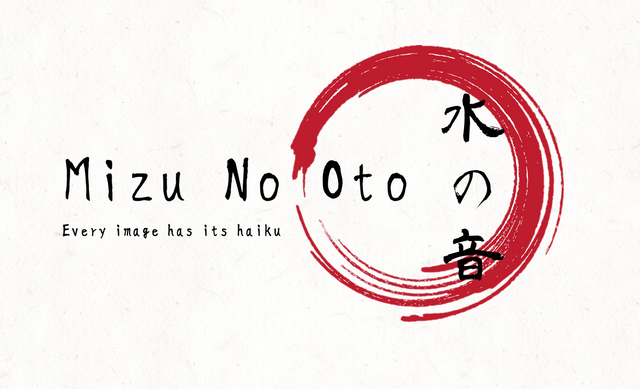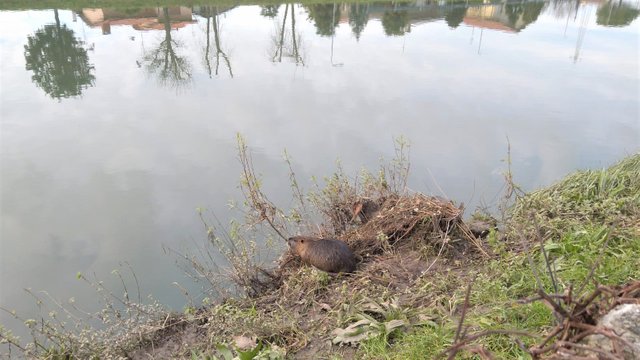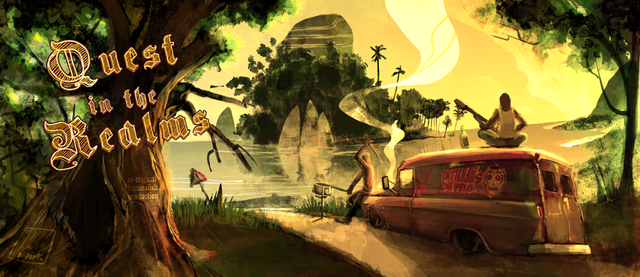Mizu No Oto - Every Image Has Its Haiku - Edition #45 (English)

haiku by Patricia Davis (USA)
This Mizu No Oto January English edition came a little later than expected, but time and energy are always too little to do everything you want to do. I hope the photo is inspirational and that the article at the bottom of the post is worth the wait.
Here is how this contest works:
A photo is posted.
You write a haiku inspired by that photo with your own post (use #haikucontest as your first tag) or a comment in the comment section.
You can read other’s haiku and vote for one of them, answering to the special Bananafish comment in the comment section.
The authors of the Best Haiku, Popular Choice, and Best Vote Comment WIN 1 SBI each!
The contest deadline for both posting haiku and voting is the payout of this post (7 days from the publication). There will be another post with the winners proclamation after 1-2 days from the deadline.

The Prizes:

The requirements:
• The haiku should be related to the prompt image.
• A haiku has no title.
• The haiku should be in English, or include an English translation.
• The English haiku form is: a short (3-4 syllable) verse, a longer (5-6 syllable) verse, another short (3-4 syllable) verse.
• There should be the kireji (切れ字), a cut between the 1st and the 2nd verses, or between the 2nd and the 3rd; the cut can be grammatical, as a sign of punctuation, or it can be a cut in the meaning, like two different images.
• The time window to post your haiku and cast your votes is up to the payout of this post.

Prompt Image:

[photo by @marcoriccardi]

Do you want to know how we evaluate the submitted haiku? These are the characteristics we search for:
• Kigo (季語), an explicit or implicit reference to a season, that defines the time of the year in which the haiku is composed or referred to.
• Sabi (寂), the sense of the inexorable passage of time, the beauty or serenity that accompanies the advance of age, when the life of the objects and its impermanence are highlighted by patina and wear or by any visible repairs.
• Wabi (侘寂), the taste for frugal and natural things, rustic simplicity, freshness or silence; it can be applied to both natural and artificial objects, or even non-ostentatious elegance.
• Mono no aware (物の哀れ), empathy with nature and human life; the "feeling of things", nostalgia, regret for the passing of time, understanding of the changeability and of the transience without suffering.
• Yūgen (幽玄), sense of wonder and mystery; it represents the state of mind produced by the inexplicable fascination of things, the feeling of an 'other' universe, full of mysterious unity.
• Karumi (軽み), beauty in simplicity; poetic beauty reflected in its simplicity, free from preconceptions and moral judgment.
• Shiori (しおり), gentleness; the levity and the delicate charm that radiates from the verses, where things are evoked in the reader without aggressiveness or excessive explicitness.

The Honkadori
In Japanese poetry, honkadori (本歌取り), literally “variation of the basic poem”, is an allusion within a poem to an older poem which would be generally recognized by its potential readers. The concept emerged in the 12th century during the Kamakura period, long before the birth of the haiku.
Indeed, this type of quotation mostly refers to waka poetry and even prose novels like The Tale of Genji. They were forms of literature spread among the noble classes, in selected circles of people who showed off high culture, including the "intellectual game" consisted of recognizing and sharing the same erudition.
For this reason, adding quotations to other poems was a way to demonstrate one's culture and to honor the masters whose verses were quoted or recalled.
An author included in his writing a part of an older work, composed by another author, varying its meaning and atmosphere. The aim was to combine the originality of the new composition with the historical value of the one cited, creating an allusive continuity (never explicit).
Like prof. Akiko Tsukamoto said in his lecture held in October 2010 at the University of Bologna, for the Japanese, “the meaning of a work of art did not derive from the authors themselves, but from their access to the Absolute Truth or the Way. This can be found or lost, but it doesn't belong to anyone.” The artists are not original creators, but enlightened individuals who discover something that already exists and cannot be owned by them. Therefore, using the honkadori was not seen as a plagiarism, especially following particular formal rules aimed at preventing pre-existing poems from being plundered.
In particular, these rules established that the quotation should have an allusive effect and fully maintain the spirit (kokoro) of the cited composition, reworking it in a new context without adulterating it.
For example, Fujiwara no Teika, in 1198, wrote this waka:
ōzora wa / ume no nioi ni / kasumi-tsutsu / kumori mo hate-nu / haru no yo no tsuki
across the sky
the scent of plum blossoms moves
like spreading haze
yet the clouds don’t cover
the moon on this spring night
The two bold lines are a honkadori of this waka written by Ōe no Chisato in 894 (almost 300 years before):
teri mo se-zu / kumori mo hate-nu / haru no yo no / oboro-zukiyo ni / shiku mono zo naki
not shining clear
and yet not covered by clouds
is the moon
on this night in springtime -
a thing beyond compare
It can be seen how a slight shift of the borrowed words produced a new contextualization without drifts.
This style of quotation is also used in haiku, albeit to a lesser extent than in waka, and has undergone an evolution that has made it more independent from poetic traditionalism. The honkadori in haiku is a form of poetic homage, but it doesn’t want to demonstrate superior culture or create a connection between intellectuals who can recognize the quote and feeling part of the same “school”.
In the following epoch, in fact, this vision of the honkadori clashed with an opposite tendency, which advocated the manipulation of the spirit of the original writing, not only the form. The aim was to generate a sense of surprise in the reader in catching the allusion in a new, unusual context, often reversing the original feeling.
For example, Matsuo Bashō was a salacious user of this irreverent form of honkadori:
世にふるも更に時雨のやどり哉
yo ni furu mo sara ni shigure no yadori kana
life in this world
just like a temporary shelter
from a winter shower
Soogi 宗祇(そうぎ) Iio Sogi (1421 - 1502)
Tr. Ueda Makoto
世にふるも更に宗祇のやどり哉
yo ni furu mo sara ni Soogi no yadori kana
life in this world
just like a temporary shelter
of Sogi's
Matsuo Bashō
Tr. Ueda Makoto
A more modern example is this Masaoka Shiki haiku that puts a rural Yosa Buson haiku from the 1700s in an the context of the late 1800s burstling city of Kawaguchi:
寝ぐるしき伏せやを出れば夏の月
negurushiki fuseya o dereba natsu no tsuki
hard to find sleep
I get up and outside -
the summer moon
Yosa Buson
川口や湯舟を出れば夏の月
Kawaguchi ya yubune o dereba natsu no tsuki
Kawaguchi -
I get out of the bathtub and outside
the summer moon
Masaoka Shiki

Good haiku to everybody, and remember the posting/voting deadline: seven days from this post publication!
Your bananafishous haiku herald


Let’s the Bananafish Tribe grow together!

With delegations, Bananafish VP will grow and consequently the upvotes given to every contest entry will be higher.
Following the voting trail is a way to make sure you always support the other participants to the Bananafish contests, automatically upvoting the posts (but not the comments) Bananafish upvotes.
Join the Bananafish Realms on Discord and chat with us: https://discord.gg/ZWmEUWT
If you’re interested, here you can find all the information needed.

[banner credit: @f3nix]
Other Bananafish awesome contests and creative works (click on the banners):

You may also want to take a look to @tristancarax contest:




Hereby my entry.
If this is not what you mean I might change it.
https://steemit.com/@wakeupkitty/entry-mizu-no-oto-every-image-has-its-haiku-edition-45-english-bntcdgfl
Happy day 💕
Posted using Partiko Android
Hi @bananafish, here is my entry:
https://steemit.com/haikucontest/@felixgarciap/my-entry-for-mizu-no-oto-every-image-has-its-haiku-edition-45-english
On the shore!
the otter waits crouched
a miracle.
A miracle! I love the contrast and the abstraction. You can interpret it many different ways.
This is dear friend. God the creator gives us these gifts.
Finally, Marco! I've been busy, but checking in on entries. Such a wonderful photo. I took a light approach:
Ahh, tall trees
So much wood to cut
Rest up now
Yes, there are many participants in this edition. I like your amused look!
Vote your favorite haiku:
I liked @marcybetancourt haiku
For this edition # 45 I prefer the haiku of @tristancarax. He presents two images and a great Karumi; his simplicity and freedom from moral judgments is wonderful in the construction of his verses.
His technique of toriawase with torihayashi to the third ku (according to my apprentice appraisal of haiku) favors the third verse that separates a subtle script from the previous poetic image. It is perfect!
It has been some time. Here be my entry.
https://steempeak.com/@tristancarax/mizu-no-oto-every-image-has-its-haiku-edition-45-english
p.s. Thanks for the contest mention, @marcoriccardi. ;-)
Nice, really nice. So many layers!
;-)
Greetings, dear companions.
This is my entry for the first Mizu of this year:
https://steemit.com/haikucontest/@oacevedo/mizu-no-oto-every-image-has-its-haiku-edition-45-english
to the sweet source.
Soon, the rain.
Hi guys, my participation https://steemit.com/haikucontest/@marcybetancourt/mizu-no-oto-every-image-has-its-haiku-edition-45-english
World of heads.
The beaver looks
water and sky.
Haiku lovers:
Very interested with today's lesson from our enthusiastic judge about the possibility of quoting in the construction of haiku, I leave my exercise from the image of @marcoriccardi)
The mirror copies
shapes, colors.
https://steemit.com/haiku/@gracielaacevedo/mizu-no-oto-cada-imagen-tiene-su-haiku-edicion-45-ingles
Hi!
This is my entry:
https://steemit.com/haikucontest/@mllg/mizu-no-oto-every-image-has-its-haiku-edition-45-english-spanish
I love all of you.
https://steempeak.com/hive-114105/@owasco/mizu-no-oto-haiku-contest-edition-45#comments
undisturbed pond -
a muskrat contemplates
making a wake
This is a honkadori of Matsuo Bashō's
An old silent pond...
A frog jumps into the pond,
splash! Silence again.
What a honkadori! You know...this contest name is the third ku of that specific haiku: mizu no oto (noise of water)
I couldn't find the haiku in the Japanese, not that I could have read it anyway. Now I am even more happy I chose it.
Someone else wrote a honkadori of that very haiku as well. I think it was josemalavem.